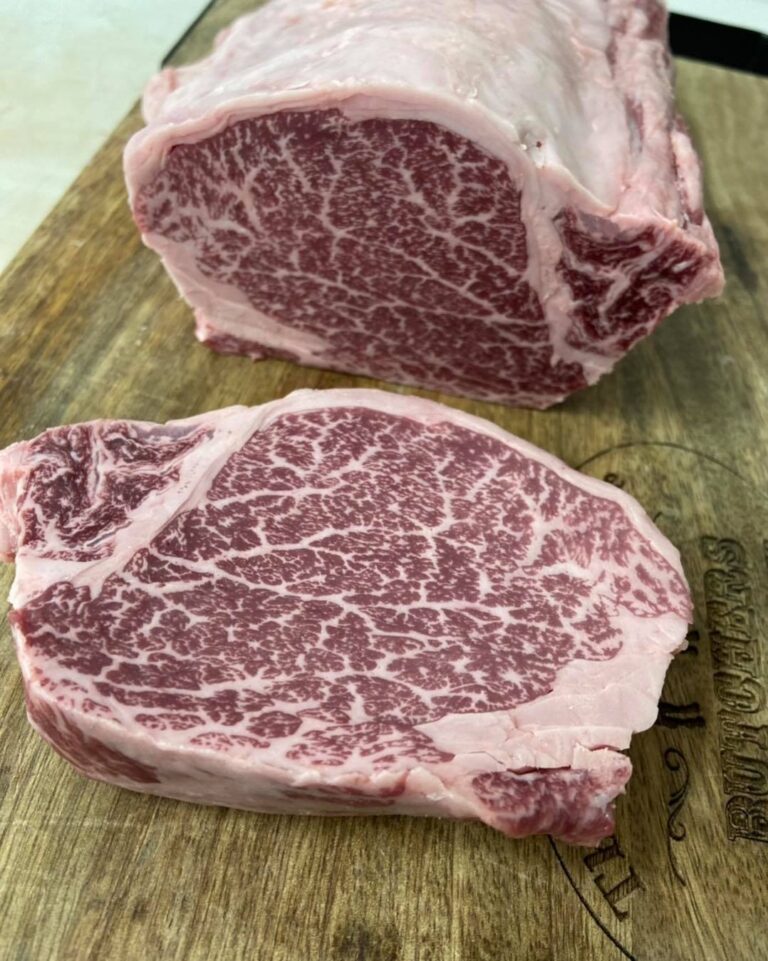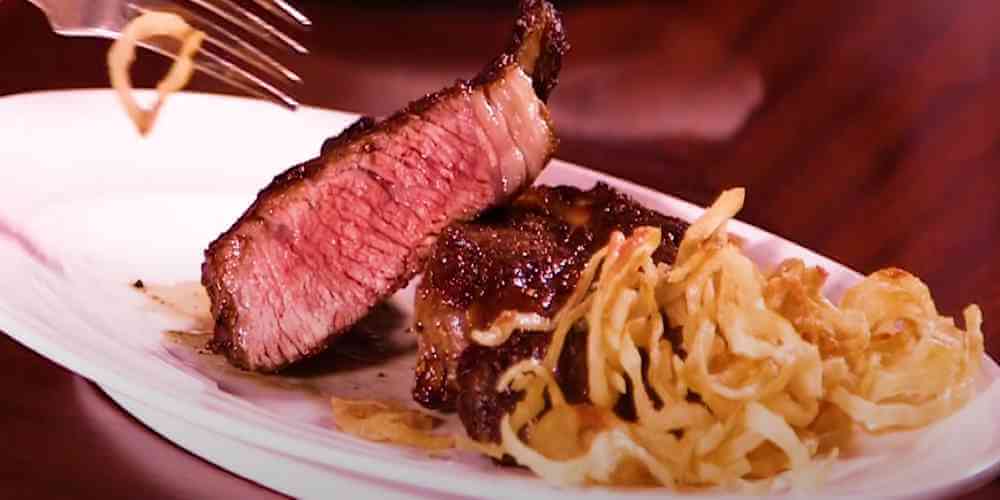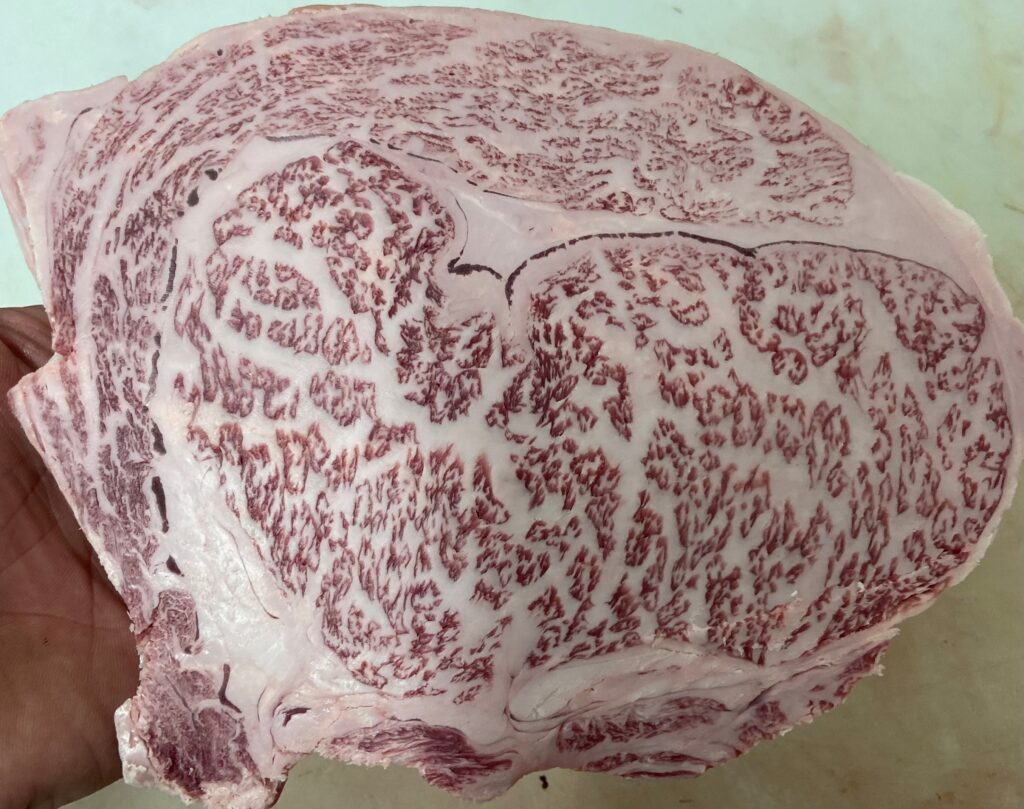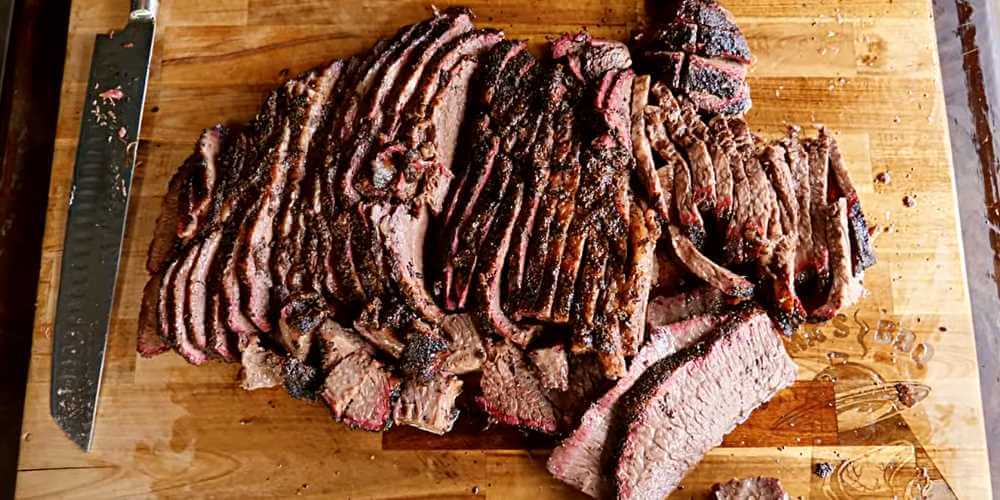Everything You Need to Know About Japanese Wagyu

Wagyu.
Let me tell you the story of my Wagyu awakening. Taking trips to the supermarket is what I love doing most. Nothing excites me more than seeing, feeling, and smelling the fresh offerings for the day! It was one of those days when I needed to buy some steak for a special dinner. Passing by the meat aisle, I grabbed some excellent Rib-eye cuts and proceeded to check out. There I was busy with my phone while waiting to find out the total of my grocery haul when the cashier said,
“Your total is $624.”
What?! Did I hear that correctly? $624 for one supermarket trip? My eyes widened in disbelief as I quickly scanned the list of items on the screen. Then, it hit me. The rib-eye steaks I picked up cost $500 per kilo! In what kind of Universe did steaks cost this much?! I picked up the pack of steaks and checked the label. There it was. Japanese Wagyu. I didn’t even know what that was until I half-heartedly paid for my stuff and went home.
“This better be good”. I thought to myself. A few pieces of steak later and I concluded that it was the best-tasting beef that I have ever had in my entire life! Succulent, juicy, oozing with so much flavour, and fork-tender. So, what’s the deal about Japanese Wagyu? Here’s the lowdown on the world’s most expensive beef!
What is Japanese Wagyu?
Simply described, Wagyu means Japanese cow. However, this simple word masks a subject rife with misconceptions. To begin with, it’s pronounced wah-gyoo rather than wah-goo, a mistake that’s frequent even among American Wagyu farmers. Japanese beef is the direct translation of “wagyu,” a type of premium beef. However, it doesn’t apply to all varieties of Japanese beef.
All Japanese beef cattle are referred to as “wagyu.” Japanese is denoted by “wa,” while “gyu” is cow. Wagyu, however, refers to four distinct breeds of purebred cattle, including the Japanese Black (Kuroge), Japanese Brown (Akage), Japanese Polled (Mukake), and Japanese Shorthorn (Nihon Tankaku). In 1944, this classification was created. Of the four Wagyu breeds, Japanese Black represents 95% of the Wagyu bred in Japan, whereas Japanese Polled and Shorthorn are exclusively found in Japan. Wagyu steak has become a staple of gourmet dining establishments throughout the globe. Because of its remarkable marbling, extraordinary softness, and exquisite flavour, wagyu is the premium cut of beef to buy!
What is the history of Wagyu?
Up to 35000 years ago, there is evidence that the Wagyu genetic strain underwent some degree of genetic separation. For generations, cattle were developed for physical endurance and utilised in agriculture as draught animals in Japan. Cattle were only employed for working purposes in Japan before the Meiji Restoration in 1868, and crossbreeding with non-Japanese cattle was uncommon, given the country’s island isolation. At the same time, meat wasn’t widely consumed in Japan until 1872, owing to religious restrictions. Emperor Meiji first ate meat in public that year, which led to a 13-fold increase in beef output. The choice was to introduce superior cattle breeds to boost body size and milk output. Because of this, the administration sought to impose Western eating customs and culture, which led to cattle being imported from other countries. During this time, cattle from Korea, Brown Swiss, Devon, Shorthorn, Simmental, and other breeds were imported. In 1910, foreign genetic infusions were prohibited for these British, European, and Asian breeds.
The fundamental breeds that came to be referred to as “Wagyu” had developed. They are descended from indigenous cattle bred with foreign breeds to increase their size. Four primary cattle breeds were found to be better after decades of mating Japanese cattle with foreign cattle, and they eventually took over as the dominant breeds in the 20th century. The breeds we now classify as Wagyu are Kuroge (Black), Aakage (Brown), Nihon Tankaku (Shorthorn), and Mukaku (Polled). The breed of cattle most frequently utilised to make highly marbled Wagyu meat is the Kuroge cow. The government established registration and selection of “improved Japanese Cattle” in 1919, but each prefecture adopted its goals as a holdover from the feudal era. In 1944, the government formally recognised three primary breeds and streamlined the registration procedure. It wasn’t until 1957 that the Japanese Shorthorn was recognised as such. In 1988, the Japan Meat Grading Association established the grading for Wagyu beef. While in 1997, Japan enacted a live Wagyu cattle export ban to protect the bloodline and keep the Authentic Wagyu cattle exclusive to Japan.
How do you grade Japanese Wagyu?
Currently, Wagyu beef is graded by the Japanese Meat Grading Association (JMGA), just like beef from American cattle is graded by the U.S. Department of Agriculture (USDA). The USDA grades it to guarantee that beef meets the criteria Americans want when they purchase it. The JMGA grades Wagyu beef according to its fat colour, meat colour, rib eye form, size of the ribeye area, and IMF per cent, which stands for its marbling.
There are many categories for wagyu, and there are two grades to be assigned: a Yield Grade, which is designated A to C and indicates the amount of high-quality meat produced, and a Quality Grade, which is a number between 1 and 5. The marbling, meat colour and brightness, firmness and texture, as well as the colour and quality of the fat, are used to determine the quality grade. Based on the yield score—calculated from the area of the rib eye, the thickness of the short ribs, the thickness of the subcutaneous fat, and the weight of the half carcass—a yield grade is given. Cutting between the left carcass’s sixth and seventh ribs, area and thickness are calculated. Because yield grade indicates how much meat might be extracted from a carcass, producers and distributors are primarily responsible for setting the price. The grade of meat matters more to customers. More marbling, which would result in a mouth-melting feeling, indicates better quality. A5 is the grade for wagyu beef, which is the most costly and of the best quality.
Why is Wagyu so expensive?
Due to the fine-grained intramuscular fat, commonly known as marbling, Japanese Wagyu steaks are very uncommon, costly, sought-after, and remarkable. It essentially distinguishes the steak from the other cuts of beef available at your neighbourhood butcher shop and gives it its distinctive texture and flavour. The way that Wagyu cattle are reared is what gives them their unrivalled marbling. Frequently, the breeder will grow the cows for 10 months before selling them to a farm where they would be fattened. They are housed in little farms and fed a combination of fibre and a high-energy concentrate comprised of hay, rice, and wheat until they reach 50% fat. The price is influenced by how expensive the feed is. No wonder a kilo can cost as much as $500!
What are the best Wagyu cuts?

Japanese A5 Wagyu beef was developed and grown to produce meat with great flavour and texture. Steaks often have fat along the side of the meat. Wagyu cows have a particular way of metabolising fat and integrating it into their muscles. This marbling produces a buttery mouthfeel and a tonne of robust flavour. Now that you know what Wagyu is, it is time to find out which Wagyu cuts your local butcher and online butcher have to offer.
- Wagyu Filet Mignon
- Wagyu Top Sirloin
- Wagyu Ribeye
- Wagyu Striploin
- Wagyu Rump
- Wagyu Tenderloin
- Wagyu Skirt Steak
- Wagyu Beef Brisket
The beef brisket may not be the most popular cut but using Wagyu for any low and slow dishes will guarantee you a fork-tender and melt-in-your-mouth dining experience! You can buy beef brisket the above cuts from any local butcher or from an online meat shop.

- Currently, the U.S. and Australia are the two countries that export the most wagyu beef, with the U.S. receiving almost 80–90% of Australian exports. The market is expanding quickly due to the strong demand for dry-aged wagyu beef, particularly in industrialised countries.
- The most recent market research study from Technavio predicts that the worldwide wagyu beef market will grow at a CAGR of more than 6% between 2019 and 2023.
- In terms of market share in 2018, the APAC region came out on top, followed by North America, Europe, the Middle East & Africa, and South America. The high wagyu beef consumption in nations like Japan and the development of the food service industry in the area are both responsible for the market growth in APAC. The top two countries for producing Wagyu beef are Japan and Australia.
Is buying Wagyu worth it?
The cost is unquestionably justified if you want to partake in a dining event that comes around just once or twice in a lifetime. Thanks to the many Wagyu beef shops available online, you may find high-quality beef online with just a quick search. Always be sure you are getting Japanese Wagyu Beef and not another variety of Wagyu. Additionally, you should be mindful that the price will look excessive, given what you want to acquire. Remember that you are essentially buying and delivering the most expensive beef in the world from another continent.

